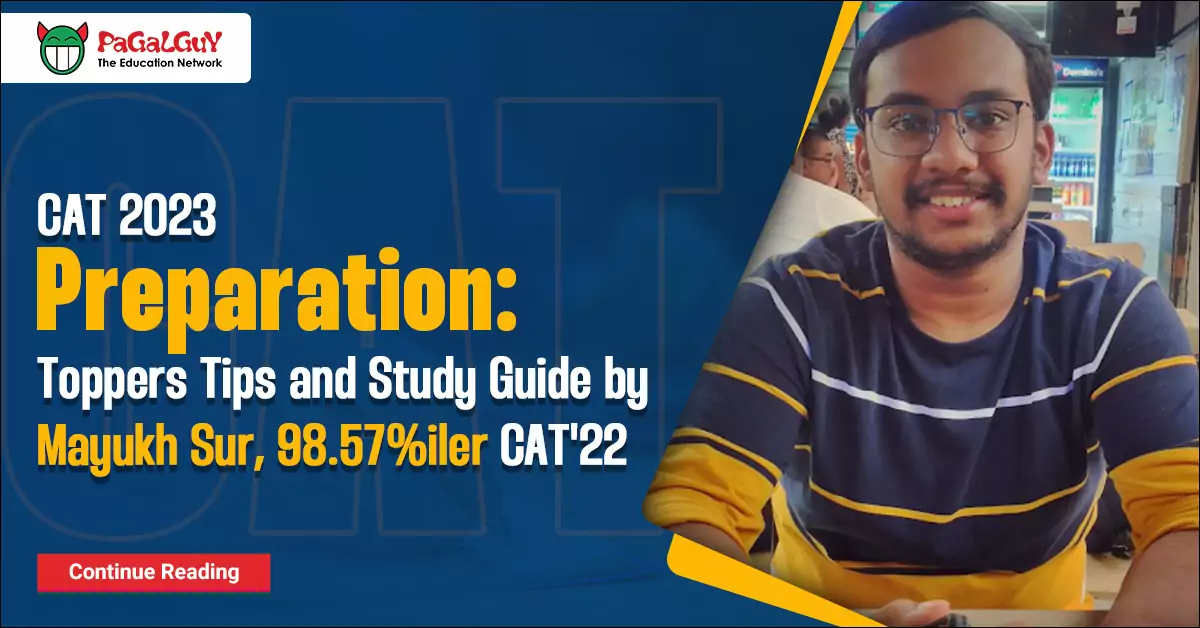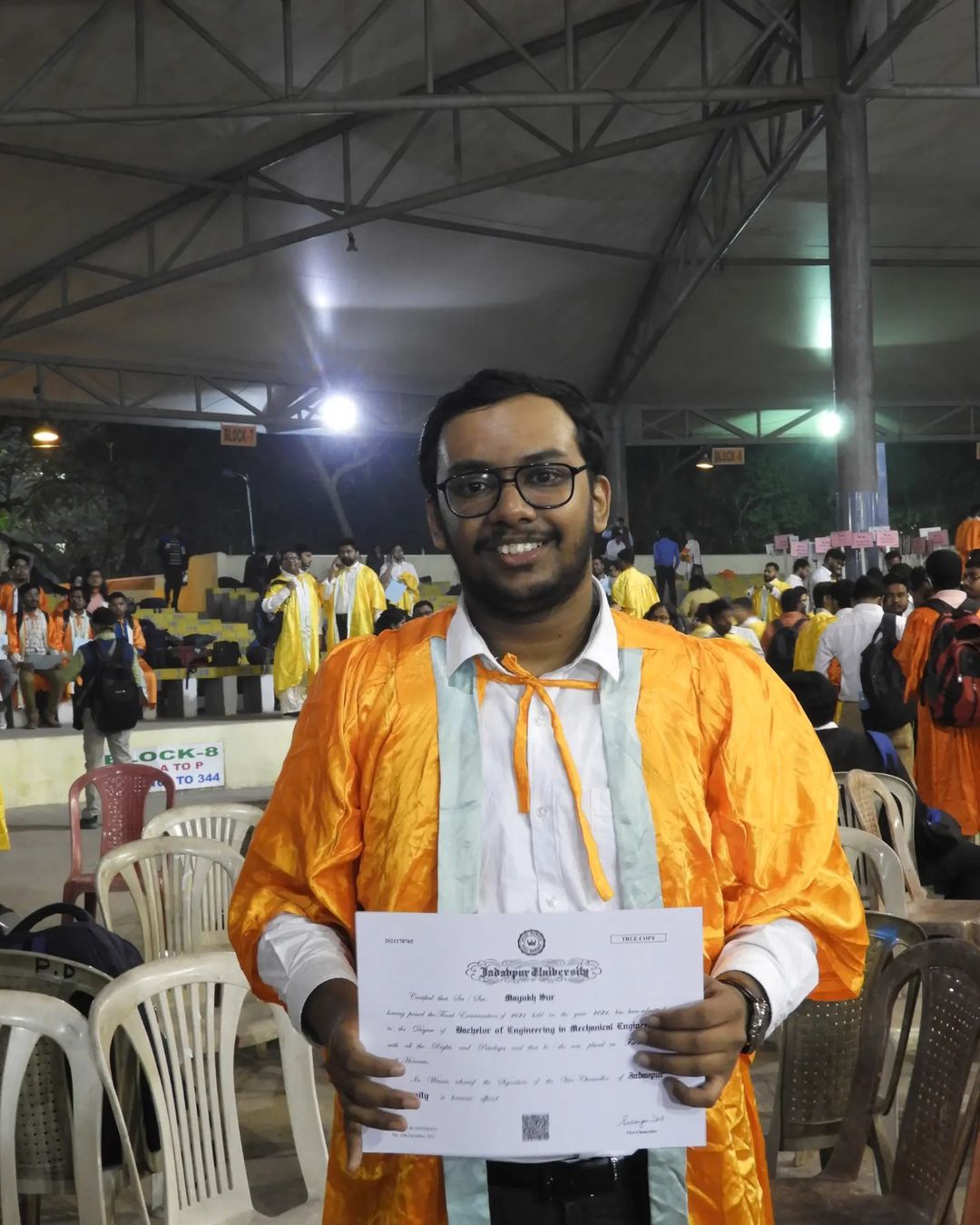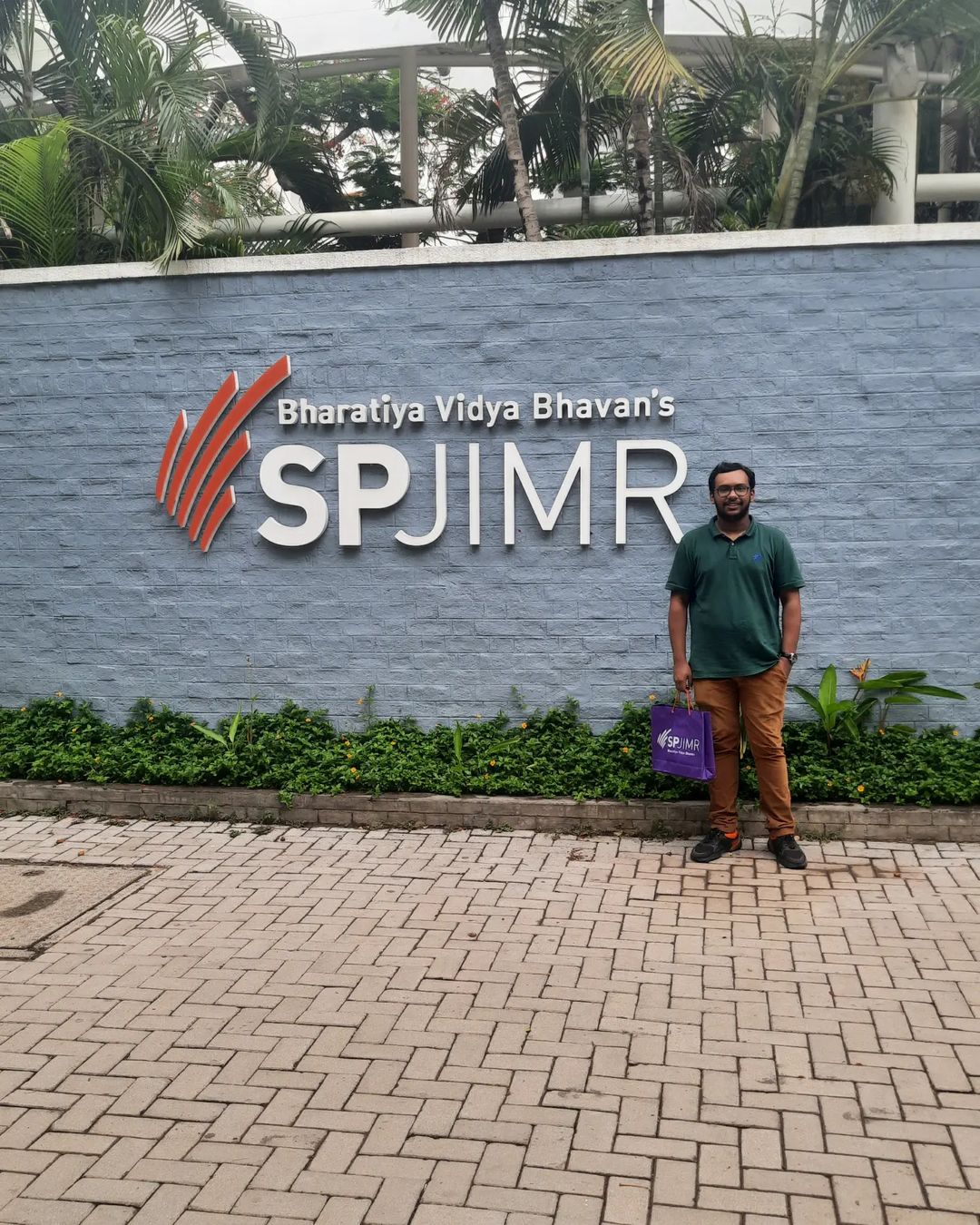
Preparing for CAT is no piece of cake, my friend! It’s tagged as one of the toughest exams in the country, and it assesses multiple aspects of your abilities. From Data Interpretation to Verbal Ability, every section becomes a crucial part of the CAT exam challenge. But fear not! We’ve got you covered with some valuable insights from Mayukh, who aced the CAT 2022 with an incredible 98.57 percentile.
But first let’s get to know Mayukh beyond his CAT success! He hails from Jalpaiguri, West Bengal, and completed his high school in Jalpaiguri,West Bengal and senior secondary in Kota, Rajasthan. After that, he pursued Mechanical Engineering at Jadavpur University, graduating with a stellar CGPA of 8.43. Impressive, right? Moving ahead, he gained work experience as a Supply Chain Manager at ITC Limited for about ten months before taking on the CAT exam and nailing it!
We’re super excited to share Mayukh’s journey with you. His story is packed with trials, tribulations, and triumphs, and it’s loaded with valuable lessons that aspiring CAT candidates like you can carry on your own paths. So, join us on this adventure as we unravel Mayukh’s path to CAT glory and discover the pearls of wisdom that can guide you on your own exciting journey to your dream b-school!
1. Why did you choose to do an MBA?
The thought of pursuing an MBA first occurred to me during the last years of my engineering degree. I developed a keen interest in one of the subjects called Operations Research. While working at ITC, it became evident to me that to become a more effective manager, I needed a comprehensive understanding of various business functions, such as marketing, finance, and more. Recognising this, I realised that an MBA would provide the perfect opportunity to delve deeper into supply chain management and broaden my career prospects.
2. How did you approach your CAT preparation? Did you seek help from coaching, or did you opt for self-study?
My CAT preparation was entirely self-study. I relied on taking mock exams from specific institutions and delved into studying key and advanced concepts on my own. During this time, I resigned from my full-time role at ITC to focus on preparation, but I also dedicated some of my time to teaching underprivileged children.

3. In your opinion, how many months does one need to dedicate to fully preparing for CAT?
In my personal experience, I believe the duration of CAT preparation varies from person to person. For me, five months were sufficient to prepare for the CAT. It was my second attempt after 2020 when I scored 97 percentile, it was during my first attempt at CAT 2021 that I realised I needed to focus on VARC to improve my percentile, as I didn’t score well in that section. The preparation timeline can differ for others, and some might need a year or more, depending on their individual understanding and how they plan and approach the topics.
4. Can you describe your preparation approach for the various sections of CAT?
In preparing for the various sections of CAT, I followed different strategies for each:
VARC: I identified my weak areas in VARC, particularly my reading speed. I started reading editorials from The Hindu and critically analysing Aeon essays to improve it. This mixed bag of essays helped me connect sentences and enhance my reading speed. I also used the elimination technique in VARC, negating wrong answers rather than focusing on finding the right one. This approach significantly improved my VARC scores. I relied on IMS mocks and referred to PK De Sarkar’s book for grammar.
In terms of the verbal ability and reading comprehension part of VARC, I found reading comprehension comparatively easier, as there were four questions per passage, increasing the probability of getting answers correct. In contrast, the verbal part had more options to choose from, making it more challenging. I found it helpful to look for hints and clues, like clubbing the ending and beginning sentences in para jumbling or seeking a complete overview in summaries.
DILR: For DILR, practice was key. While we can practice many questions, the probability of encountering the exact ones during the exam is low. Nevertheless, practice is crucial for identifying your strengths and weaknesses. I discovered that I was better at handling data, so I prioritised attempting the DI questions first during the exam. DILR is more about accuracy than the number of questions solved, so focusing on doing them correctly, even if it’s fewer, was my approach. I also referred to a YouTube channel called Rodha to prepare for DILR.
Quant: While many dread the quant section, I found a constructive approach to approaching Quant. I divided the section into subsections like algebra, arithmetic, and geometry and tackled one area at a time during preparation. This way, I could identify my strengths and weaknesses in each subsection. During the actual exam, I made a three-round plan in the first two minutes. I decided which questions I would solve first, then those I would attempt in the next round, and finally, the ones I would leave if there was a time constraint. I focused on solving the easiest questions first, followed by the moderate ones, and leaving the more difficult ones for later if time permits.
I learned that calculation errors are usually due to losing focus, so I made sure not to stick to a rigid strategy of attempting a specific number of questions. Even if I could solve fewer questions, accuracy was more crucial for achieving a high percentile in the quant section.
5. How can someone determine which questions to attempt first, and how can they develop this skill?
In my experience, I’ve come to believe that this ability develops with practice. When I divided the sections, I gained insight into my strengths and weaknesses in each one. While assessing this, two issues often arise. Firstly, there are concepts that I don’t fully understand, and I know I won’t remember them during the exam. So, from the beginning, I avoided investing time in these concepts. Secondly, there are questions that I feel I can solve, but they require a significant amount of time. In such cases, I choose to leave those questions aside.
6. How did you review your mock results, and what was your process for analysing them to identify areas for improvement?
In my view, giving mock tests is essential, but many overlook the significance of analysing those mocks effectively. Sometimes, the mock scores can be dishearteningly low, and it can be demotivating. However, instead of dwelling on the low scores, I believe it’s crucial to understand why you scored poorly and identify areas for improvement. Rather than being sad about the results, one must focus on learning from your mistakes and finding ways to perform better in the next mock.
During CAT preparation, many students experience burnout at different stages. To cope with it, I found solace in spending time with friends and juniors at my college, engaging in conversations unrelated to CAT. This diversion from the exam-related stress helped me clear my mind and provided a refreshing break. After such interactions, I could reevaluate my preparation strategy, re-energise myself, and rebuild my focus on CAT with renewed determination.
7. What is the ideal number of mock tests one should take during the entire preparation journey for the CAT? Do you believe there is a specific number that can be considered optimal?
I believe there isn’t a single definitive answer to this question. During my 150 days of preparation, I opted for 20 full-length and 50 sectional mocks. I thoroughly analysed each mock and used the insights gained to improve my performance in the subsequent ones.
8. You’ve stepped into a fascinating phase of your life; what do you envision the future holds for you?
I believe in setting short-term goals, and my fundamental objective is always to improve myself. To be a good leader, one must excel as a manager and embrace empathy and kindness. These qualities are essential for effective leadership. Currently, I am looking forward to engaging in various non-classroom activities at SP Jain. While I am serious about my studies, I also aim to gain a holistic B-School experience. As for the future, I hope to find myself in a better situation than where I am now.

Get expert guidance on how to approach CAT 2023 by joining CAT Prep 2023 | CAT Previous Year Question Papers With Solution | CAT 2022 Student Review | PaGaLGuY
